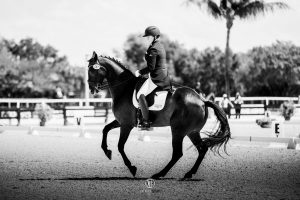Reiten Lernt Man Durch Kehren
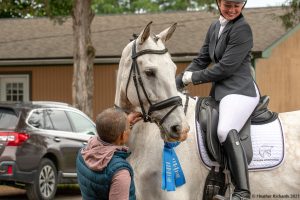 Working students come and working students go. It’s the nature of the business, and as much as it stresses me out, I expect it. It’s a job that young people keep for a little while to build a resume, to work their way up to other things. I get it. I did the same thing.
Working students come and working students go. It’s the nature of the business, and as much as it stresses me out, I expect it. It’s a job that young people keep for a little while to build a resume, to work their way up to other things. I get it. I did the same thing.
It’s also a job that separates the wheat from the chaff. It’s physical. It’s exhausting. It’s tedious and dirty, and it’s got long hours, and it doesn’t lead itself to a huge social circle outside of the barn, so making friends in a new part of the world can scare some people. Every trainer has a story about hiring some bright young thing only to have them get completely overwhelmed by the job and last only a handful of days.
Summertime is a popular start time for working students, and all over the country young people are graduating from high school or college and making their way to someone’s farm, moving in their stuff and preparing for tomorrow’s full day of work. Here’s a little advice on how to stick it out the awkward early days.
Read the rest at The Chronicle of the Horse!
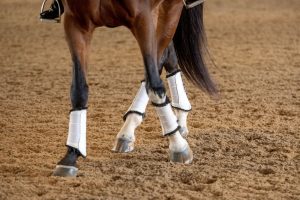 You come out to ride, you groom, you tack up, you hop on… and your horse is lame. What do you do? You certainly can call the vet right away, but there’s a few things I like to rule out first, when I encounter a mild lameness.
You come out to ride, you groom, you tack up, you hop on… and your horse is lame. What do you do? You certainly can call the vet right away, but there’s a few things I like to rule out first, when I encounter a mild lameness.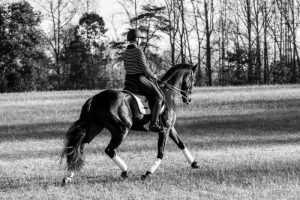 I’ve made many FEI dressage horses, most of them out of horses who were complete and utter ding-dongs as children but reformed enough by middle age to be able to do the top-level work on a combination of training and adrenaline. I’ve never really had to think about horse fitness before. But Elvis and Helio are really pleasant, agreeable fellows. They’re not nutty. And they’re not hot. So with Elvis’ Grand Prix debut, and Helio’s rapid approach to that level, I’ve realized that I need a lot more gas in their collective tanks to execute that level of work, with aplomb, and on a hot competition Sunday.
I’ve made many FEI dressage horses, most of them out of horses who were complete and utter ding-dongs as children but reformed enough by middle age to be able to do the top-level work on a combination of training and adrenaline. I’ve never really had to think about horse fitness before. But Elvis and Helio are really pleasant, agreeable fellows. They’re not nutty. And they’re not hot. So with Elvis’ Grand Prix debut, and Helio’s rapid approach to that level, I’ve realized that I need a lot more gas in their collective tanks to execute that level of work, with aplomb, and on a hot competition Sunday.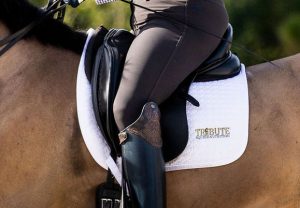
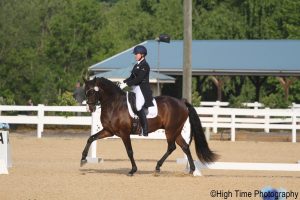 I like showing, but I’m not a maniac.
I like showing, but I’m not a maniac.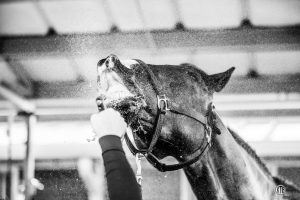
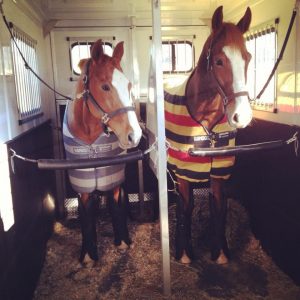 Invisibility? Nah. Super speed? Only if it came with Super Strength, so I could just carry horses in from the field in the mornings. But there’s three superpowers I would definitely take, if made available.
Invisibility? Nah. Super speed? Only if it came with Super Strength, so I could just carry horses in from the field in the mornings. But there’s three superpowers I would definitely take, if made available.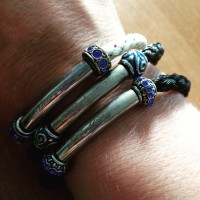 I have a coat bag – in my farm colors, brown and blue – that I’ve been schlepping around with me for more than a decade. It had to be a custom order, because I’m so tall that standard size bags scrunch my tails up at the bottom. And over the years, I’ve collected a few things that I carry with me to shows. I’m not a superstitious person, but they’re little mementos that help me remember what’s important, and think of a few old friends.
I have a coat bag – in my farm colors, brown and blue – that I’ve been schlepping around with me for more than a decade. It had to be a custom order, because I’m so tall that standard size bags scrunch my tails up at the bottom. And over the years, I’ve collected a few things that I carry with me to shows. I’m not a superstitious person, but they’re little mementos that help me remember what’s important, and think of a few old friends.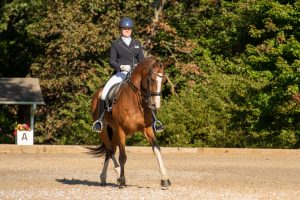 Fear is something I see every day. Not so much in myself (more on that in a sec), but as a teacher of amateur people, many of whom either aren’t young or started riding as adults or both. It’s been a companion of mine throughout my teaching career, and it was one I didn’t really understand in the beginning.
Fear is something I see every day. Not so much in myself (more on that in a sec), but as a teacher of amateur people, many of whom either aren’t young or started riding as adults or both. It’s been a companion of mine throughout my teaching career, and it was one I didn’t really understand in the beginning.